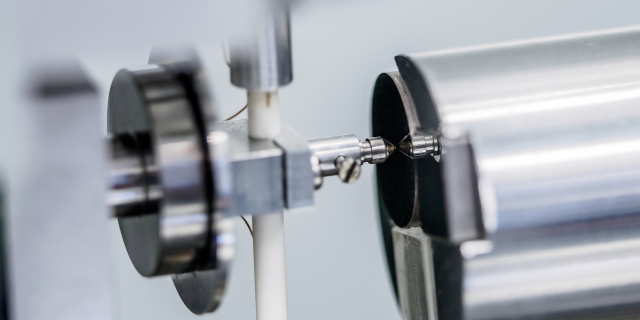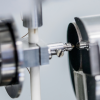Nuclear Fuel Cladding Research - Collaboration with South Korea
2023.12.14 7:30 - Marek PawłowskiIn early December, the ATF Cladding project, jointly submitted by scientists from Poland and South Korea, was approved for implementation. The National Centre for Nuclear Research (NCBJ) represents the Polish side, while the consortium includes Seoul National University, the Korean Atomic Energy Research Institute, and DAEKYUNG TECH & TESTERS on the Korean side. The aim of the project is to perform a detailed study on the structural stability and associated changing functional properties of a new type of fuel cladding jackets coated with a protective layer, designed for nuclear reactors. These materials will enhance the tolerance to nuclear events of such components and are called Accident Tolerant Fuel.
See the original text in Polish ->
Read the AI translation:
The main objective of the joint Polish-Korean project is to conduct a detailed investigation on the structural, mechanical, and thermal aspects of a new type of fuel cladding jackets that are resistant to uncontrolled temperature and pressure growth, known as Accident Tolerant Fuel (ATF). The study will focus on real fuel cladding jackets coated with protective layers based on chromium and chromium-aluminum alloys. These fuel jackets should be resistant to LOCA (Loss of Coolant Accident) events and prevent zirconium oxidation, which could lead to hydrogen release and potential accidents like the one in Fukushima.
Additionally, in the fundamental research part, the project aims to develop a method for determining the mechanical properties of materials using continuous nanoindentation techniques. These investigations will enable the determination of mechanical properties of extremely thin layers, excluding the influence of the substrate on which the protective layer is applied.
Nanoindentation is a localized material testing technique that does not require specific sample shapes or the use of large material volumes. It can also be used to study small material samples from a real nuclear installation (or directly measure on the component) and determine the mechanical strength based on the obtained data, which will be compared to standard tensile test results. This will facilitate the development of guidelines for correctly interpreting the obtained microscale results.
Materials used in nuclear reactors, including the reactor pressure vessel, are constantly exposed to intense neutron and gamma radiation. This radiation exposure causes the materials to lose their ductility and become more brittle due to the development of radiation-induced defects. To ensure the safety of nuclear reactors, it is important to predict in advance when the impact of neutron radiation becomes significant and a particular component needs to be replaced. However, acquiring appropriate samples for testing is a challenging task. Although so-called witness samples are installed in commercial reactors, their quantity is limited, and the material and type of samples must be determined during the reactor design stage without the possibility of later modifying these assumptions.
To implement the new material measurement method in the nuclear industry, it is crucial to verify the correctness of the obtained results and their compliance with applicable standards. The project participants expect that through joint research, an appropriate platform based on hardware, analysis methods, and their verification can be established. This platform may find applications in various industries, leveraging its credibility stemming from the use of nuclear technologies.
The project will be coordinated by Professor Jacek Jagielski from NCBJ on the Polish side, and Professor Seung-Kyun Kang from SNU on the Korean side. The project budget exceeds 7 million PLN, with over 4 million PLN allocated to NCBJ. The project is expected to be implemented over a period of three years. The ATF Cladding project is the only one that secured funding under the joint Polish-Korean projects competition announced in 2023.


















